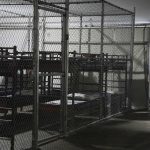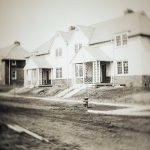
I remember the first time I held a camera. It was my father’s old Leica, a relic from his time in Germany where he was stationed before serving in Vietnam. I used to play with it, pretending to focus and take photos long before it was ever loaded with film.
Photography has always been a part of my life, even though I did not take it seriously as a vocation for much of my early years. But just by being the one who always took snaps at family gatherings or on holiday trips, I learned to see the world differently through a camera lens.
When the pictures were developed, I did not just see them as a series of moments, but as a series of self-contained stories. Holding a camera would eventually become my shield and my voice. Over the arc of my life, it would motivate me to take journies to places I never imagined.
Along with the landmarks and historic environments I discovered, taking photos also opened the door into the heart of human suffering and triumph. Looking through a camera’s eyepiece forced me to confront not only the world’s harshest realities but also my own limits as a witness to history.
For over a decade I have been based in my hometown of Milwaukee. Growing up I thought I missed so much of history, but I have documented the seismic shifts that have defined our current era. The polarization of the Trump years. The ravages of COVID-19. The raw, unfiltered outrage of the George Floyd protests demanding social justice. The unrelenting wars in Ukraine and the Middle East. Earthquakes that leveled entire towns. Each frame captured was a testament to humanity’s capacity for both resilience and destruction.
Yet, as much as I have seen hope and courage, I have also seen indifference — an apathy so pervasive in the United States by my fellow Americans that it feels like an existential threat.
It is the indifference that gnaws at me. More than the devastation or suffering I have photographed, it is the collective shrug of a society that refuses to confront its own reflection that bothers me most.
In my hometown of Milwaukee, a city brimming with potential but weighed down by its own inequities, I have seen people turn away from their neighbors in crisis. Homeless encampments grow in the shadows of luxury developments. Food banks overflow with need as grocery stores throw away heaps of food because some flavors stopped trending.
There is kindness in volunteers who give their time, and activists who refuse to be silenced, but too often their efforts are drowned out by the complacency of the majority.
I began my career with a sense of purpose that felt very spiritual. My purpose was not just to inform but to inspire, to hold up a mirror to the world in the hope that people might see themselves in the lives of others. My mission statement was not some corporate motto but a line from a poem by Marianne Williamson.
“As we let our own light shine, we unconsciously give other people permission to do the same.
As we are liberated from our own fear, our presence automatically liberates others.”
It was an philosophy rooted in being positive, a belief that humanity’s better angels would prevail if only people were reminded of their existence with information for context and perspective.
But as the years passed, that optimism was tested in the least expected areas. I saw how easily people could look away, and that took me a long time to admit. Images that should have provoked outrage – of children in cages, of bodies in mass graves, of cities reduced to rubble, were met with fleeting concern before the next news cycle swept them away.
Social media offered the illusion of engagement, but in reality, it often amplified the noise made it harder to hear the signal. It also gave people permission to not care. If there was outrage it became performative, a currency traded in likes and shares, while the real work of change was left undone.
By 2022, my perspectives had shifted because I could no longer avoid the clarity that political voices and the pandemic had wrought. I still believed in the power of photography to bear witness, but my faith in its ability to ignite change had waned.
I took comfort, not in Biblical scriptures but in a quote by another woman, a pioneering photojournalist from a different age.
“If nobody puts it down on the record anywhere, then the monsters win totally. It must be someplace on the record, because otherwise they could get by with anything. Does it stop anything? I don’t feel that everything I’ve done has been of use. But at least, it is better than silence. Because if you are silent, then they can rewrite it anyway they want. They can make it look great afterward. So there is a point on the record.” – Martha Gellhorn
She understood what it had taken years of my frayed optimism to realize, the act of documenting is not enough to change the course of events, but it is vital to ensure that the truth cannot be erased. My work, I told myself, was better than silence, even if it felt like screaming into the dark void.
There is a particular kind of exhaustion that comes with bearing witness. It is not just physical, though the long hours and dangerous assignments take their toll. It is the emotional weight of knowing you are a spectator to suffering you cannot alleviate.
There were tragic moments in the daylight that drew attention, and a day-to-day drumbeat of trauma that passes by in silence but accumulates like a Dental plaque around a community’s heart.
During the height of the pandemic when so many were suffering, I saw people of privilege defy mask mandates, gather in crowds, and dismiss the virus as a hoax. The disconnect was staggering.
The protests following George Floyd’s murder were another turning point. I walked the streets of Milwaukee as thousands demanded justice, their voices a chorus of pain and defiance. I photographed their faces — anguished, resolute, hopeful.
But I also documented the backlash. The police in riot gear, the social media posts decrying the “chaos” without acknowledging its cause. It was a microcosm of a nation unwilling to confront its own sinful history, let alone its present.
Through it all, I have tried to hold onto my humanity, to see the good in the world even as I document its flaws. I thank my friends who embody the kindness and compassion I wish were more widespread.
I have witnessed moments of extraordinary grace — strangers helping each other in the aftermath of a disaster, people shielding others during a moment of chaos, and families helping children survive thousands of miles away. These are the images I cling to when the darkness feels overwhelming.
And yet, the exhaustion remains. It is the exhaustion of shouting into a void, of seeing the same mistakes willingly repeated over and over. It is the exhaustion of living in a country that seems to have forgotten its own ideals, where selfishness and short-term thinking have become a kind of default setting.
People are not dumb, as those with opposite political views say in blame of each other. The sad truth is their hearts are empty of love, so they subsist on a diet of fear which manifests as hate at one extreme and indifference at the other. Long-term exposure to this created my environment of exhaustion. Along with it the knowledge that while I can document the truth, I cannot make people care.
But even in my darkest moments, I still find reasons to hope. Hope is not a passive thing. It is an act of defiance, a refusal to surrender to despair. I often think of Frederick Douglass, who understood the power of images to challenge narratives and affirm humanity. I think of the young activists who refuse to accept the status quo, who demand a better world with a fervor that cannot be ignored. I think of the volunteers who quietly make a difference every day, their actions as a reminder that goodness exists even when what they do is never represented in the headlines.
Hope is not about expecting the world to change overnight, or maybe even in a lifetime. It is about believing that change is possible, even if it comes in increments too small to see. I have always understood that living my purpose meant I would likely never behold the fruits of my labor, that it was for me to plant seeds that might one day grow.
As a photojournalist, I have a responsibility not just to document the world as it is, but to imagine the world as it could be. My camera is not only an object for recording history. It is a tool against indifference, a means of amplifying the voices that might otherwise go unheard. And while the work is often thankless, it is also necessary. Because if we stop bearing witness, if we allow the truth to be erased or rewritten, then we have truly lost.
So I continue to look through the lens, even when the view is bleak. I continue to press the shutter, even when it feels futile – and electronics has made the physical camera function of a shutter obsolete.
I continue to believe in the power of storytelling, even when the audience remains disengaged and absent. Because hope, like photography, requires light. And as long as there is light, there is something worth capturing. That something worth is fighting for.
© Photo
Yau Ming Low and Visual Musica (via Shutterstock)















